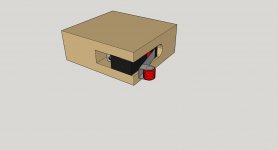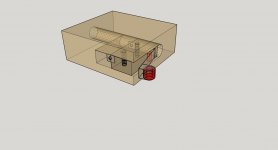I've been building some built-in's for all of the rooms in my house. The master walk-in cabinets I built last year had LED's installed under the shelves and we like them very much. In the built-in we installed a power supply and wired it to a dimmer switch so it's a fairly simple install and works well being a walk-in. For the built-in's switches don't make as much sense - the kids will close the cabinet doors and forget to turn off the lights.
the built-in's have multiple doors (just like kitchen cabinets). When I open a particular door, I'd like the LED's only in that cabinet to light up and when I close the door, the lights turn off. Here's a pic of my daughter's dry fitted together with no doors or drawers.

I'm not opposed to getting the right parts however I'd prefer to use as many of the parts I already have as possible. Here's what I have right now:
So I've been looking into sensors and door switches which would power the lights once the doors were opened. These setups are new to me and I'm not quite sure if I can buy components to utilize the power supply I already have for the entire system or if I need to buy a power supply for each cabinet. From what I can tell, the switches attach to the power supply and initiate the supply when the sensor is triggered. Does anyone have experience setting up a system like this who can provide some recommendations? Any help is appreciated.
Matt
the built-in's have multiple doors (just like kitchen cabinets). When I open a particular door, I'd like the LED's only in that cabinet to light up and when I close the door, the lights turn off. Here's a pic of my daughter's dry fitted together with no doors or drawers.

I'm not opposed to getting the right parts however I'd prefer to use as many of the parts I already have as possible. Here's what I have right now:
- Dimmabe power supply capable of pouring the whole closet
- 12v LED strip light
So I've been looking into sensors and door switches which would power the lights once the doors were opened. These setups are new to me and I'm not quite sure if I can buy components to utilize the power supply I already have for the entire system or if I need to buy a power supply for each cabinet. From what I can tell, the switches attach to the power supply and initiate the supply when the sensor is triggered. Does anyone have experience setting up a system like this who can provide some recommendations? Any help is appreciated.
Matt



